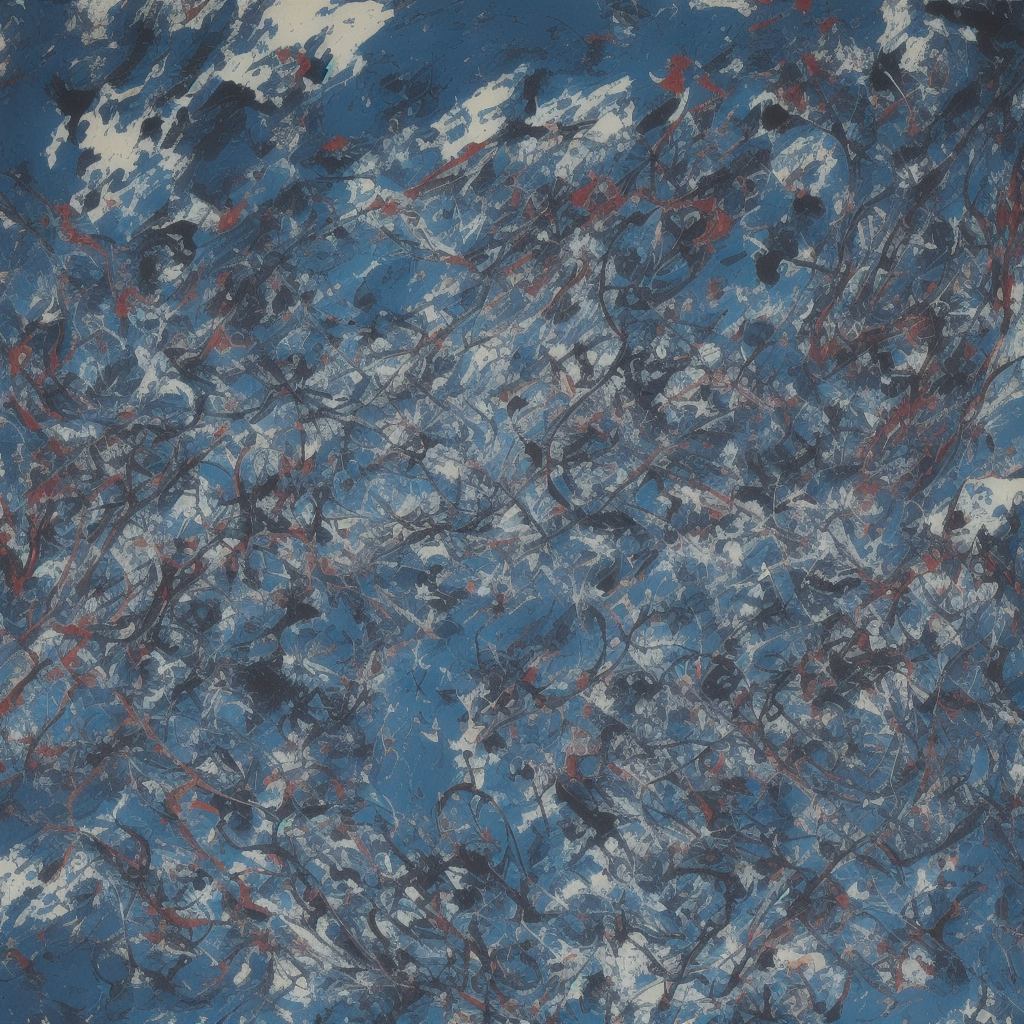Jackson Pollock and the color Blue

Jackson Pollock, a prominent figure in the Abstract Expressionist movement, revolutionized the art world with his unconventional techniques and innovative use of color. One color that played a significant role in his artwork was Blue.Historical Context:During the early to mid-20th century, Abstract Expressionism emerged as a dominant art movement in America. Artists like Jackson Pollock sought to express emotions, energy, and subconscious thoughts through their paintings. Blue, traditionally associated with tranquility and calmness, took on a new meaning in Pollock's hands. It became a tool for him to explore the depths of human emotion and create dynamic, expressive compositions.Artistic Technique:Pollock's unique approach to painting involved dripping, splattering, and pouring paint onto large canvases laid out on the floor. This method, known as "drip painting," allowed him to achieve a sense of movement and spontaneity in his work. Blue often appeared as a dominant color in his compositions, standing out against the other hues and adding depth and contrast. The use of various shades and tones of blue created a sense of rhythm and harmony in his paintings, drawing viewers into an immersive experience.Imaginative Interpretation:The way Pollock utilized Blue in his artwork can be seen as a reflection of his own psyche. The swirling patterns and chaotic energy in his paintings suggest a sense of turmoil and inner struggle. Blue, in this context, could represent a range of emotions - from deep sadness and melancholy to hope and introspection. Its presence in his art invites viewers to explore their own feelings and interpretations, encouraging a personal connection and engagement with the work.In conclusion, Jackson Pollock's use of Blue in his artwork was both groundbreaking and deeply influential. Through his innovative techniques and emotive expressions, he redefined the role of color in abstract art, pushing boundaries and challenging perceptions. The color Blue served as a powerful tool for Pollock to convey his innermost thoughts and feelings, creating a visual language that continues to captivate and inspire audiences to this day.